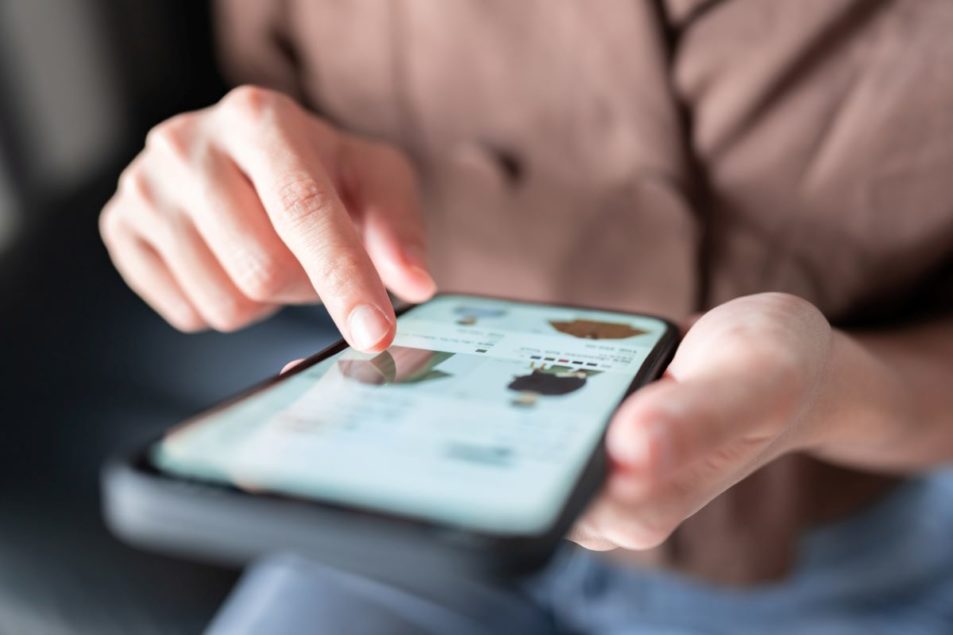
Steve Rop says it’s time for a revolution in returns. As retailers pull out of a relatively disappointing peak holiday shopping season, the cost of returned goods is going to sting all the more. In fact, customer relationship management giant Salesforce reported a 63% spike in returns during November and December, year over year. So a revolution sounds good, but there’s a hard edge here: E-commerce is growing in terms of proportion of overall retail sales, and e-commerce attracts a much higher rate of returns.
One way retailers can ease the financial burden of returns is to use them as an incentive to get shoppers back into brick-and-mortar stores, says Rop, who is chief operating officer at goTRG, a company that works with companies such as Walmart, Sam’s Club and Lowe’s to process returned items.
“I don’t like free returns, especially during the holidays because everyone is bracketing,” says Rop, referring to the common practice of ordering clothing or shoes online in multiple sizes or colors in order to pick one (or none) and return the rest. During the recent peak season, Rop says, returns typically rose as high as 30% of online purchases. And there’s no way around it: Retailers lose money on returns. That’s why we’ve seen a decline in free returns of late, as well as narrower time windows during which to make a return.
As the pandemic turns endemic, consumers are shifting their spending toward items that nobody needed during lockdowns, such as handbags, apparel, shoes and makeup. “These are very expensive items to return,” says Rop. “They attract a higher return rate as a percentage of sales, and they’re more expensive if they have to be mailed. So if retailers don’t leverage brick-and-mortar stores to make returns, they’re going to see a lot of expense.”
Instead of using a stick to influence consumer habits, such as charging mailing and restocking fees, or even making return time windows so short that many will struggle to hit them, Rop suggests using a carrot or two.
For example, allow customers to return items to stores they’re already visiting. Whole Foods now hosts multiple Amazon return centers at its stores. Walmart allows curbside drop-off of returns. If a retailer has both an online and a brick-and-mortar presence, encouraging shoppers to come into the store with a coupon for 10% or $5 off any item purchased in-store while making the return not only reduces costs, but boosts sales. In some cases, online retailers work with brick-and-mortar stores by establishing return centers in locations and also offering a coupon for the store, as Kohl’s does with Amazon.
It’s a smart way of tapping into the fact that’s emerged as we pull out of the weird isolation of the last three years: people like leaving their houses, and they like to go shopping. According to Salesforce, during the period December 15-24, 2022, retailers that offered buy online, pick up In store (BOPIS) service sold seven times more than those that didn’t.
So are higher rates of returns here to stay, and simply a fact of life? “I think online purchases are going to stay around. It’s counter-intuitive to say otherwise,” says Rop. “But I do think, as we return to normal, there are no reasons for retailers not to motivate shoppers to come back to brick-and-mortar stores. They had to take a beating during pandemic, because people didn’t want to come into the store. There’s no reason to continue to take a beating, but they have to make it a positive for consumers. And it can be, if retailers are doing the right thing.”
In the end, survey after survey of consumer attitudes show that those who have a positive shopping experience tend to stay loyal, and buy again. And that experience includes returns. “Returns shouldn’t be a negative thing for either party,” says Rop. “But they can’t be a financial loss for the retailer.”
- SEO Powered Content & PR Distribution. Get Amplified Today.
- Platoblockchain. Web3 Metaverse Intelligence. Knowledge Amplified. Access Here.
- Source: https://www.supplychainbrain.com/articles/36426-sick-of-returns-use-them-to-drive-brick-and-mortar-buys
- 2022
- a
- According
- After
- All
- allows
- already
- Amazon
- and
- apparel
- around
- Attracts
- back
- because
- burden
- buy
- Buys
- cases
- Centers
- charging
- chief
- Chief Operating Officer
- Clothing
- club
- come
- Common
- Companies
- company
- consumer
- Consumers
- continue
- Cost
- Costs
- coupon
- Curbside
- customer
- customer relationship management
- Customers
- December
- Decline
- doing
- Dont
- drive
- during
- e-commerce
- Edge
- either
- emerged
- encouraging
- especially
- establishing
- Even
- everyone
- example
- expensive
- experience
- Fees
- financial
- foods
- For Consumers
- Free
- get
- Go
- going
- good
- goods
- Growing
- Hard
- here
- High
- higher
- Hit
- Holiday
- holidays
- houses
- HTTPS
- in
- Incentive
- includes
- influence
- isolation
- IT
- items
- Last
- Late
- leaving
- Leverage
- Life
- locations
- lockdowns
- lose
- loss
- Lot
- loyal
- make
- makeup
- Making
- management
- many
- money
- more
- multiple
- needed
- negative
- normal
- November
- offered
- offering
- Officer
- ONE
- online
- online purchases
- operating
- order
- otherwise
- overall
- pandemic
- party
- Peak
- People
- percentage
- period
- pick
- plato
- Plato Data Intelligence
- PlatoData
- positive
- practice
- presence
- process
- purchased
- purchases
- Rate
- Rates
- reason
- reasons
- recent
- reduces
- relationship
- relatively
- Reported
- REST
- retail
- Retail Sales
- retailer
- retailers
- return
- returns
- Revolution
- ROSE
- sales
- salesforce
- Season
- service
- seven
- SHIFTING
- Shoppers
- Shopping
- Short
- show
- simply
- sizes
- smart
- So
- sold
- some
- Spending
- spike
- stay
- Stick
- store
- stores
- Struggle
- such
- Suggests
- Survey
- Take
- terms
- The
- their
- thing
- three
- time
- times
- to
- toward
- typically
- use
- Walmart
- which
- while
- WHO
- whole foods
- will
- windows
- Work
- works
- year
- years
- zephyrnet












